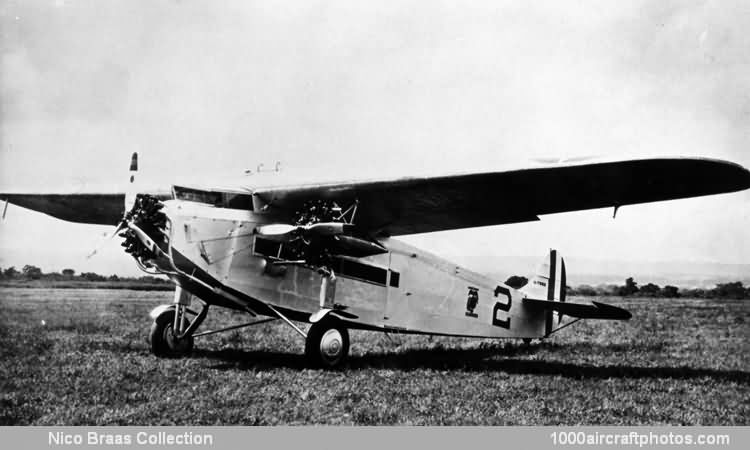12/31/2010. by Johan Visschedijk: "In 1926 the USN followed the lead of the USAAS, which had evaluated a new commercial airliner, the Fokker F.VII tri-motor, following its sensational participation in the 1925 Ford Reliability Tour. After testing the new machine, which had been built in Holland, the USAAS ordered three of a modified version designated the C-2.
The USN followed suit and ordered an additional three under the designation of TA-1 for Transport, Atlantic, they received the BuNos. A-7561 to A-7563. The Navy also had some direct involvement with the prototype, as Edsel Ford, son of the motor magnate, bought it for use by Navy Commander Richard E. Byrd's 1926 Arctic expedition. On May 9 Byrd and Navy pilot Floyd Bennett made a successful round trip flight over the North Pole from their base in Spitzbergen.
Atlantic Aircraft Corporation was formed at Teterboro Airport, New Jersey, in May 1924 to manufacture Fokker aircraft in the United States at a time when the Fokker name was still clouded by his war-time activities on behalf of Germany. However, only sixteen months later, September 16, 1925, the company was renamed Fokker Aircraft Corporation of America.
The TA-1s, carrying two pilots and eight passengers, were virtually identical with the F.VIIA tri-motor except for a wider fuselage better suited to military cargo, and the use of later 220 hp Wright J-5 engines. The TA-1s were put into service in 1927 and 1928 with the USMC in Nicaragua.
The T-for-Transport designation conflicted with that of torpedoplanes, so the TA-1s were soon redesignated RA-1, the letter R being adopted as the identifying symbol for multi-engine Navy transport and cargo aircraft. The three RA-1s became RA-3s following a change to 300 hp Wright J-6-9 engines.
Following delivery of the TA-1s, the Navy ordered three later versions similar to the USAAS C-2A as TA-2 (later RA-2), these received BuNos. A-8007, A-8008, A-8018. The principal difference involved was the use of a longer wing. When the RA-2s were also refitted with J-6 engines, they too were redesignated RA-3, thereby giving the Navy RA-3s with two different wings. One RA-3, BuNo. A-8157, was bought as such."
